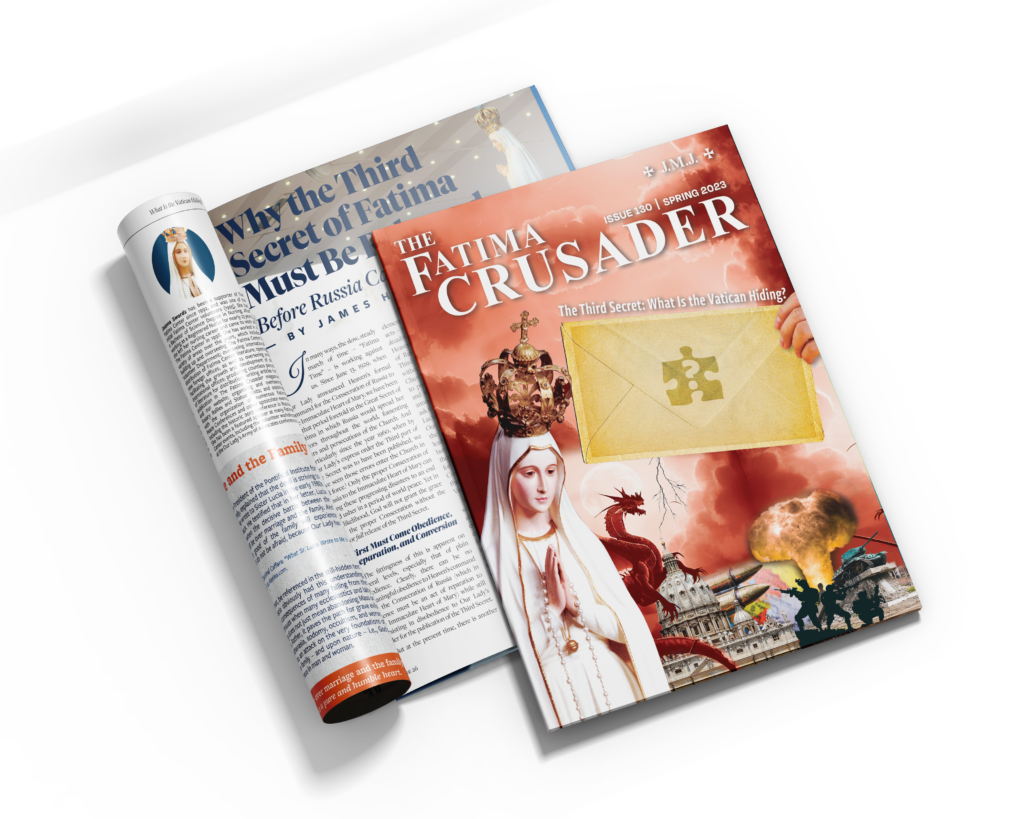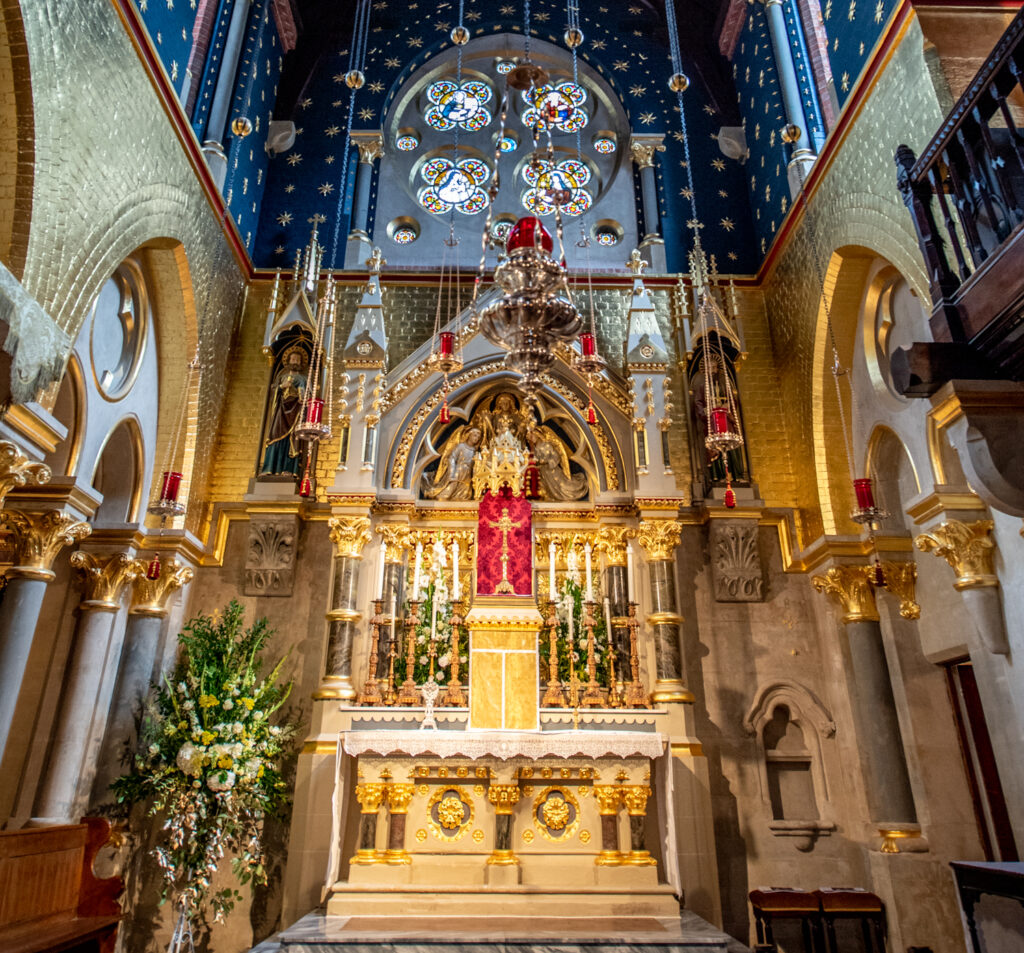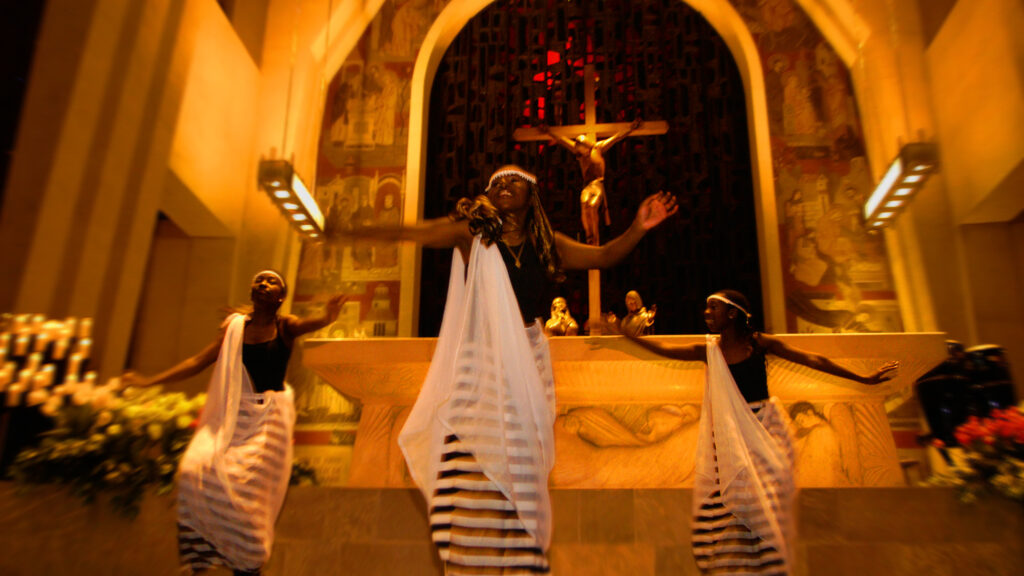Note: The Fatima Crusader Issue 130 (Summer 2023) focuses on the Third Secret of Fatima. It contains an article contributed by this author, titled “What Is the Vatican Hiding?” The following article should be read in the context of that Crusader article as the two mutually support one another, seeking to strengthen the reader’s understanding of the Third Secret.

Sunday, the Lord’s Day, is the holiest day of the week, and the day that Catholics in 1960 (and earlier) understood they were obliged to keep holy, beginning with that most solemn of all liturgical functions – the Holy Sacrifice of the Mass. Catholics worldwide flocked to Mass to fulfill that most important obligation.
Our Lady of Fatima said the Third Secret must be released in 1960 because then it will be “much clearer” – that is, the content of the Secret will become obvious to those keeping watch. Perhaps the biggest proof that we have not yet been given the full Third Secret is to consider what attending Mass in a diocesan parish church in 1960 was like compared to today, keeping in mind Our Lady’s words. Is it different? Have things changed? …
Inside the Church
Upon entering a church, the first thing a Catholic sought and saw was the presence of Our Lord in the Tabernacle (where consecrated Hosts are kept), indicated by the glow of light in the red sanctuary lamp. A flicker of light inside the red lamp meant Jesus is in His house on the altar and was the sign for a Catholic to immediately genuflect before Our Lord, bless himself with Holy Water, and maintain reverential silence.
There was never any question as to the location of the Tabernacle in a smaller parish church. It was always in the sanctuary – the most holy of places where only the priest and altar servers are permitted – in the middle and to the back of the altar. The sanctuary was enclosed by Communion rails, which separated it from the body of the church. It was a constant reminder that we are in presence of Almighty God and thus why pious, respectful mannerisms, including silence, are of the utmost importance.
Hanging in the middle, and high enough for all the faithful to see, was the crucifix – the continual reminder of the Sacrifice of the Cross by which Jesus Christ redeemed us and which is daily renewed upon the altar.

The Holy Sacrifice of the Mass
In 1960, the Catholic Church was united in the doctrine and moral teaching emanating from pulpits all over the world. There was uniformity and stability within the Latin Rite – the Church’s most ancient and venerable liturgical rite – which the Holy Ghost used to evangelize the globe. Thus, Catholics understood and believed without question that the Catholic Church is the one true church of Jesus Christ, and that in order to go to Heaven, first and foremost, one had to be a practicing Catholic. All understood that in any Catholic church they are truly in the presence of God when the sanctuary lamp is lit and especially so after the Consecration of the Mass. Even small children knew that the central focus of the Mass is Jesus Christ and His Sacrifice.
To assist the faithful as they entered the church for Mass, the ushers, present at the main entrance, assisted with seating people as quickly as possible so those already kneeling in prayer weren’t distracted. Women and girls were clothed in dresses, or skirts and blouses, and did not enter the church without their heads covered, be it with a mantilla (chapel veil), kerchief or hat. Men wore a suit or sport coat and tie.
All stood when the bell rang, signaling the entrance of the priest and altar boys from the sacristy into the sanctuary. During this time the organist played the entrance hymn, accompanied by the choir and parishioners singing the lyrics (Low Mass).
All faced Our Lord in the Tabernacle on the altar: priest, altar servers, and parishioners. The priest and altar servers genuflected before Our Lord in the Tabernacle, and then the altar boys and parishioners knelt simultaneously and joined the priest in making the Sign of the Cross as the priest uttered the words: In Nomine Patris, et Filii, et Spiritus Sancti, Amen… and began the Ordinary of the Mass – that is, the prayers common for all Masses. The responses to the prayers of the priest were said solely by the altar servers while the congregation prayed them silently, following the prayers in their Mass Missals either in Latin, or in the English translation alongside the Latin.
There was silence except for the voices of the priests and altar servers. After the prayers at the foot of the altar, the priest ascended the steps to the altar and read the Introit – the first of the prayers of the Proper of the Mass. All was prayed in Latin, including the Epistle and Gospel readings, which could be subsequently read by the priest to the faithful in English (or the language of the people in other countries). Following the readings, the priest gave a sermon.
After the sermon, the Credo (Nicene Creed) – the profession of our faith – was recited. Then began the Offertory and the rest of the Mass. From the Sanctus till the end of Mass, all in the church remained kneeling except when approaching and returning from the Communion rail after receiving Holy Communion.
The Canon (meaning “stability” in Greek) – the part of the Mass immediately after the Sanctus until the Pater Noster (Our Father) – is so-named because this part of the Mass is codified and cannot be changed. At the Consecration, the bread and wine are changed into the Body, Blood, Soul, and Divinity of Jesus Christ. Our Lord is truly present on the altar, and all are silent. The priest elevates the Sacred Host and then the Chalice with the Precious Blood, for the adoration of the faithful accompanied by the only sound in the church, the thrice ringing of the bell to alert all to the presence of Our Lord upon the altar.
 (Understanding that one cannot receive Communion unless in the state of grace, many prepared by going to Confession on Saturday afternoon, a time routinely scheduled by parish priests to hear confessions. A line of penitents waiting to confess on Saturday, in order to be properly prepared for receiving Holy Communion on Sunday, was a common occurrence.)
(Understanding that one cannot receive Communion unless in the state of grace, many prepared by going to Confession on Saturday afternoon, a time routinely scheduled by parish priests to hear confessions. A line of penitents waiting to confess on Saturday, in order to be properly prepared for receiving Holy Communion on Sunday, was a common occurrence.)
The ushers kept the process of going to Communion in an orderly fashion. In a reverential posture with hands folded in prayer, communicants approached the sanctuary via the center aisle. All communicants knelt at the Communion rail (except those unable to due to an impediment), and received the Sacred Eucharist on the tongue, administered by the priest. It was understood by all that only the consecrated hands of the priest were permitted to touch the Sacred Species, and the sacrilege it is for anyone else to do so. Upon receiving Our Lord, the faithful returned to their pews by the side aisle avoiding interaction with other laity and maintaining a silent, pious decorum befitting the presence of the Divine King.
After Communion all spent time kneeling in the pews giving thanks and adoration to Our Lord. At the end of Mass, the organist played a recessional hymn as the priest and servers left the altar.
What Catholics in 1960 Wouldn’t See
Practicing Catholics of 1960 who fell away from the faith shortly thereafter and did not return for 20 years or more, upon entering the local parish church stepped back outside to check the sign – thinking it had been misread – looking for the word “Catholic.”

Because what they saw upon returning after decades away looked nothing like what they had left. Twenty or more years earlier, they would never have witnessed the following:
- searching for Our Lord – the Tabernacle not visible, not in the center of the altar or in the sanctuary;
- altar not in use or gone, replaced by a table;
- chair for a human being at the front and center in place of Our Lord in the Tabernacle;
- absence of the Communion rail, people standing while receiving Communion;
- pews without kneelers;
- women without their heads covered;
- women wearing pants, shorts, and immodest clothing;
- men in jeans and t-shirts;
- women or other lay people in the sanctuary;
- female altar servers;
- parishioners conversing in groups in the middle of the church as if at a market or a bazaar;
- priest offering Mass facing the people with his back to where Our Lord should be;
- the prayers of the Mass in any language other than Latin;
- lay people doing the readings of the Mass;
- lay faithful bringing up wine and hosts (from the back or another part of the church) at the Offertory;
- laity receiving Communion in the hand;
- laity distributing Holy Communion or touching the consecrated Host or chalice, etc. (i.e., “Extraordinary Eucharistic Ministers”);
- prayers of the Mass of the ages changed;
- guitars or other instruments replacing the organ;
- disruptive modern “music” replacing solemn traditional hymns;
- shaking hands (priest and laity) after the Consecration, and other unholy disruptive gesturing such as clapping at any time during the Mass;
- Protestant minister, Jewish rabbi, or member of another false creed giving the sermon or preaching at Mass;
- cell phones ringing and people talking on their cell phones in the church and during Mass;
- fulfilling one’s Sunday obligation on Saturday afternoon or evening;
- lack of, or declining, devotion to the Blessed Virgin Mary, treating Her in a manner similar to the Protestants, as if She were not important or special, just another woman.
 Did things change? Beyond recognition.
Did things change? Beyond recognition.
“Then it will be much clearer.”
Two Telling Testimonies
Catholics visiting throughout the U.K., including Northern Ireland, in 2005 were shocked and dismayed to realize that they were unable to distinguish a Catholic church from a Protestant place of prayer. When the signs on the outside did not specify, they went inside assuming they would surely know immediately upon seeing the inside. Sadly, they could not identify which was Protestant and which was Catholic. They had to ask the locals – and some of them did not know either.
Here is the testimony given by a Protestant in the U.S.A. who, earlier in life, had visited a Catholic church and determined it was not for her. Decades later she went to a Catholic parish church service with a close friend, and afterward started happily relaying to me: “I thought you would want to know that I went to a Catholic church on Sunday with my friend and it was very nice. I liked it. I really enjoyed it. It was wonderful. It was, it, [and then the realization hits] it, well, actually Joanna, … it wasn’t very Catholic at all.” – words of a Protestant.
Referring to the Third Secret:
“Then [after 1960] it will be much clearer.”
– Our Lady of Fatima to Sr. Lucia




